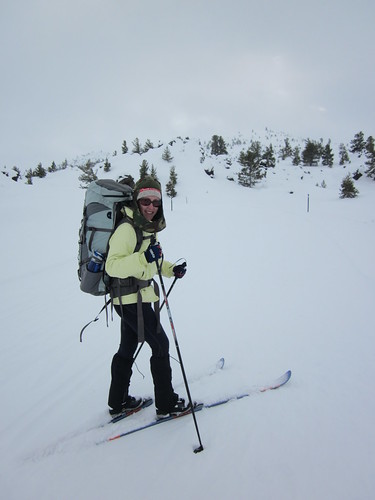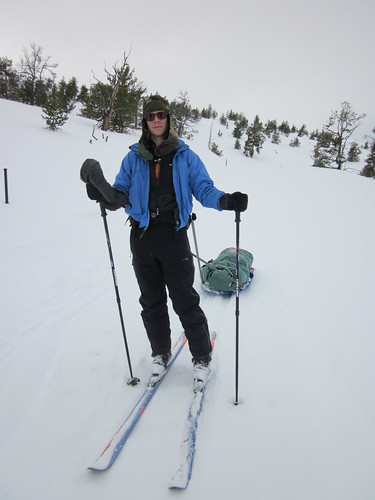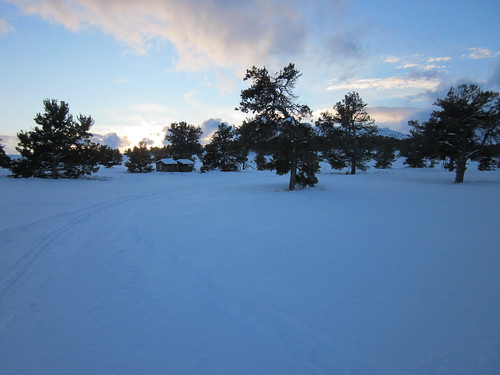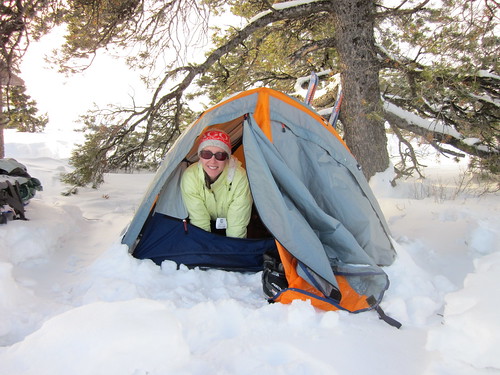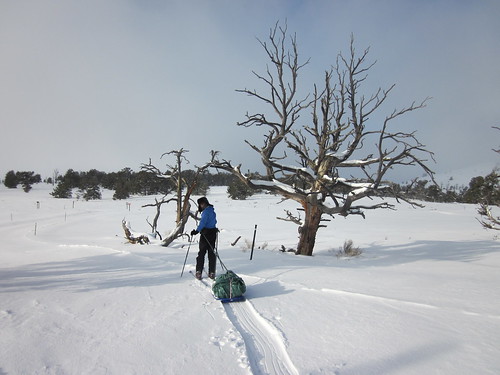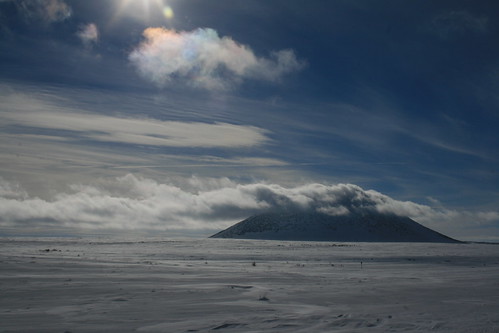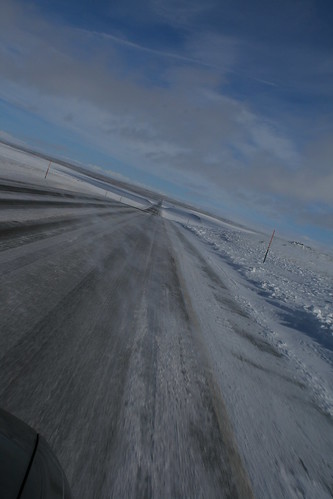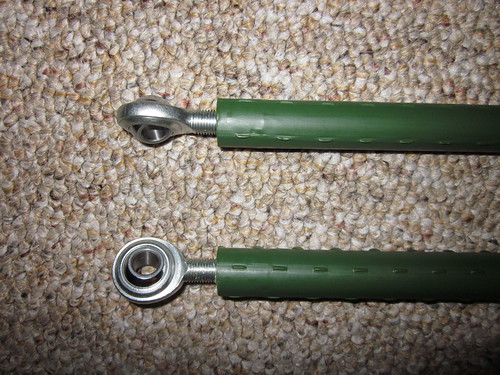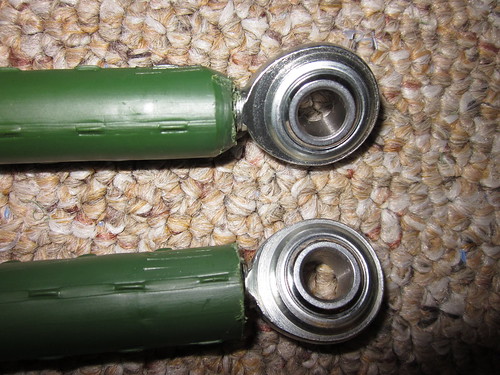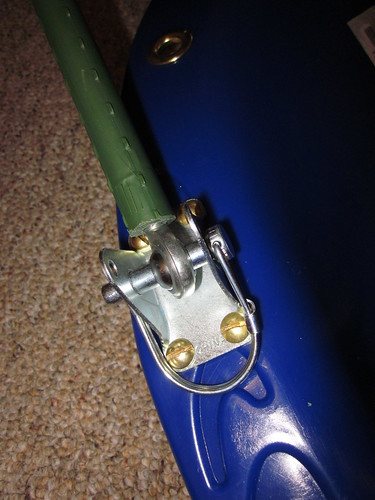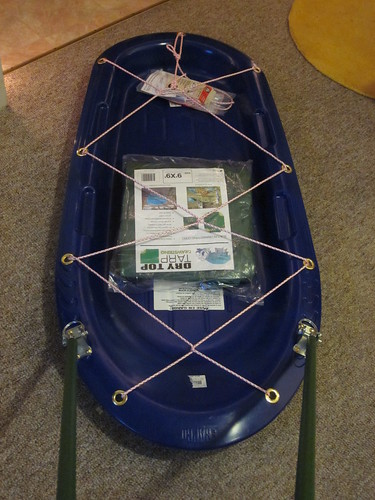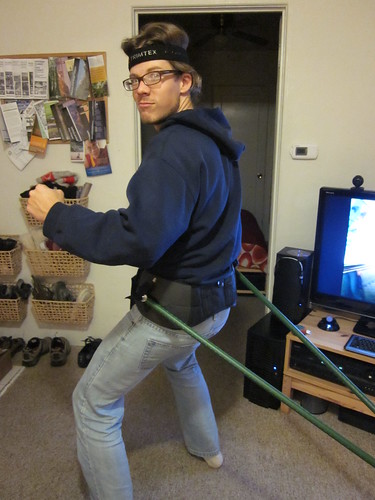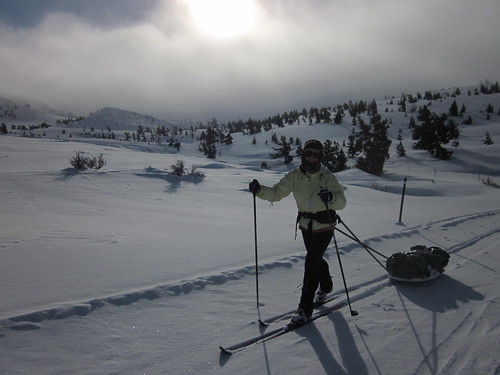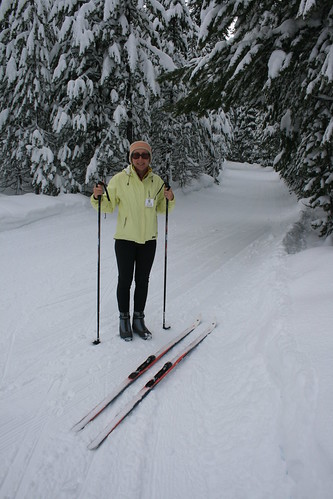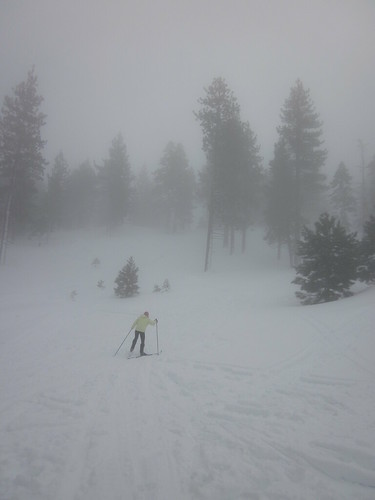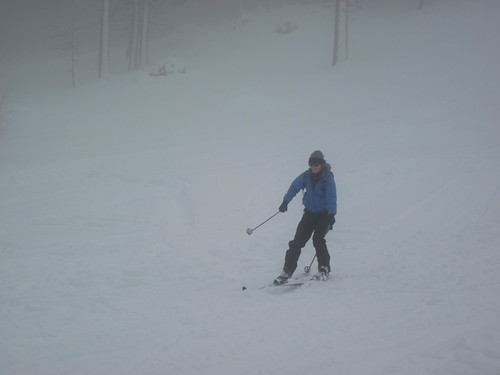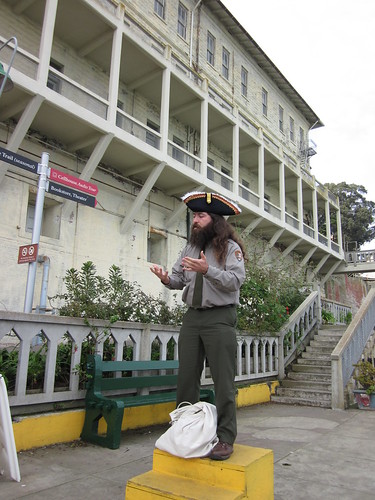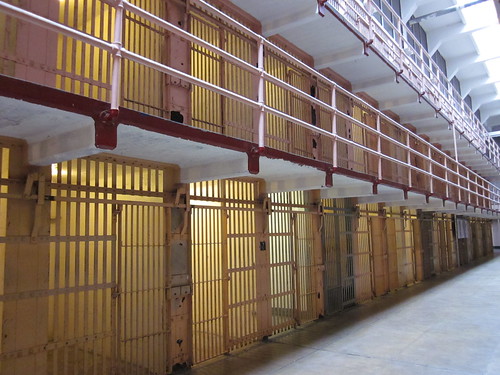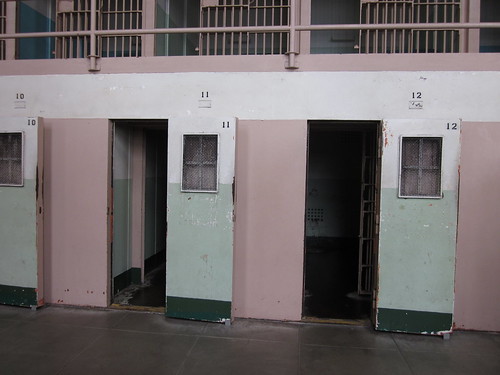
Skiing in to the Stump Creek Guard Station along the Stump Creek.
Right now we are spending part of our winter break relaxing at the Stump Creek Guard Station, a cabin owned by the Caribou-Targhee National Forest in Idaho. It is built along Stump Creek, which meanders along a shallow valley along which the Lander Cut-off of the Oregon Trail was built through. The nearest town (Auburn WY) was settled by a family who ended up stopping their journey to Oregon short. Because so many people traveled along the main route of the Oregon Trail, there were plenty of men who looked for shortcuts. Often through rougher land than the main trail, the shortcuts still got pretty well used. The shortcut that passes right by the cabin supposedly would have cut off 7 days off the entire journey. That's a lot!

Our home for the next three nights!
We had no idea that the cabin was in such a historical place when we originally rented it out. In fact, we weren't even planning on it until a blizzard and sub-zero temperatures in the Jackson valley made us rethink our plans about camping out at Granite hot springs! We needed a cheap place to stay and this cabin was it, at only $35/night. The only catch was that the road to the cabin was not plowed, so we had to ski in. But that made it all the more awesome!
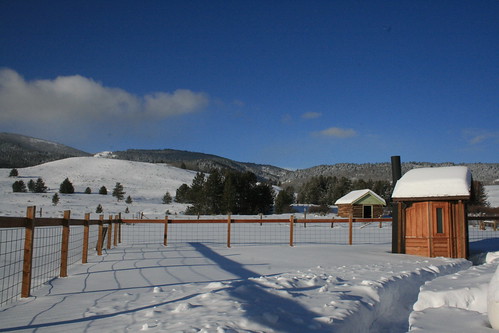
The outhouse!
The ski pulk came in really handy. When we got to Auburn, we hit the local grocery store and loaded up on food and other supplies. We were able to carry all of the food because of the pulk. It felt so luxurious to know that we were going to have omelets for breakfast, fruit juice, cookies, wine, and other goodies! We could not of carried this all on our backs. It took a while to get it all packed up on the small pulk, but soon we were ready to go. We had a little over a mile of skiing from where we parked the car to the cabin. We checked out the route on Google maps before hand, but of course, everything was covered in a couple feet of snow now, so we hoped it would be pretty obvious and we wouldn't get lost.
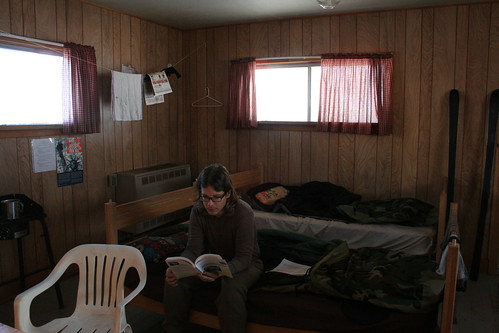
The cozy interior of the two-room cabin.
Everything turned out simple and easy getting there. There was even a small brown sign that marked the turn off of Stump Creek Rd to the cabin. When we got to the door of the cabin, that's when the work started. Nobody had been there since it started snowing. At least that's what it seemed like because we had to shovel our way in! Once we got in, we had to figure out how to turn on the heat. There was a propane furnace and a propane stove, but the big tank of propane was behind the cabin under a couple feet of snow. So the next thing we had to do to dig our way to the tank and turn on the gas. Once it was flowing we cranked up the heat, but only after some drama with the pilot light not staying lit!
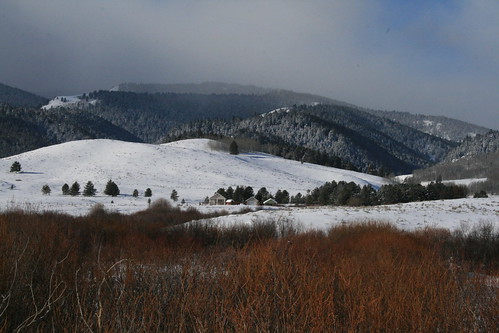
Willows grow in Stump Creek. You can see the cabin in the background.
It wasn't long until the whole cabin warmed up. We kept it at about 80 degrees for the first few hours. Once we were warm, we kept it at about 65 for the rest of the time. The temperature was dropping outside and a blizzard was supposedly rolling in and out. From where we were, you couldn't see much in the distance because of the snow coming down, and the winds were strong. We decided to just relax in the toasty cabin while the weather went crazy outside. But we did have to venture outside to use the outhouse! But first. . . . yes we had to dig our way to it. Then once we got there the door was jammed shut due to a build up of ice on the ground. We had to get out our avalanche shovels and hammer at it for a while to try and break it up. Just in time cuz I really had to go!

Stump Creek meanders in the valley.
The propane stove inside was awesome! We could cook anything we wanted! As dark fell, we even got to use a propane chandelier of fancy looking coleman-style lights with the socks. But they weren't burning properly, and after a while the carbon monoxide alarm went off, so we shut them down. We were in the dark now! The next day we decided to ski back to the car and drive back into town for some candles so that we could have light for the rest of the nights. Everything looks better in candlelight.

Going for a ski along Stump Creek Rd, possibly the old Oregon Trail.
On the last full day at the cabin, we took a ski trip along Stump Creek Rd, which I think was right where the Lander Cut-off for the Oregon Trail went. The night before it was below zero overnight, so the air was really crisp, and so was the snow. After a little while down the road, we saw horse tracks that broke through the deep snow. We followed the horse tracks down the road and saw people camped out under tarps next to a few horses. The horses were in a wooden fenced enclosure and looked really cold! You could see the breath while they were breathing. There was fire smoke coming out of a little metal chimney pipe that was sticking out of the tarp tent. To me it seemed crazy, camping out for what seemed like no reason, with a few horses. How long were they there for already?

An old barn near the guard station.
We skied along the road, which followed Sump Creek, for about 3 or 4 miles. Then we decided that we should turn back. So off we went back towards the cabin. This time the skiing was easier because we stayed in the same tracks we created on the way out. So we got back sooner than we thought we would. We still saw the people with their horses, keeping warm under the tarps. Since there was still plenty of sunlight left, we started skiing around the cabin. We found an old barn that looked like it was abandoned. It had wolf or coyote prints all around it in the snow. It even had really old farm equipment in it. As we were exploring the area, the sun started to go down. The temperature dropped so fast, it was unbelievable! I started getting really cold all of a sudden. My hands hurt and my face started hurting (that was a first!) and all my muscles started feeling really tight. Good thing we weren't too far from the warm cabin, so I skied back as fast as I could. When we got back, I made some hot cocoa.
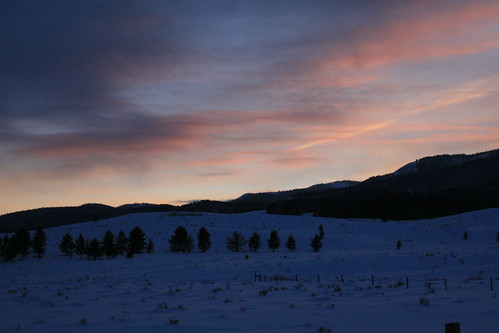
A beautiful sunset at the Stump Creek Guard Station!
It was new year's eve, and we planned on staying up til midnight. But it was kind of tough to last until midnight, since the sun went down by 5pm, and we skied all day, so we were tired! But we managed to stay awake, drinking some cheap wine we got at the grocery store, and doing crossword puzzles. Oddly enough, I actually liked doing crossword puzzles! The next morning we packed up our things and headed back out to the car. When we got there, we had to uncover the Daewoo from all of the snow that had fell over the past couple days. We were so busy unpacking that we didn't even notice the people and their pack of horses had been following us! When we turned around, there they were - the people who were camping under the trap tents! Turned out they were only camping or something and now were waiting for a horse trailer to pick them up by the plowed road where we park the car. We left before we saw them load the horses into the trailer that was supposed to come.
